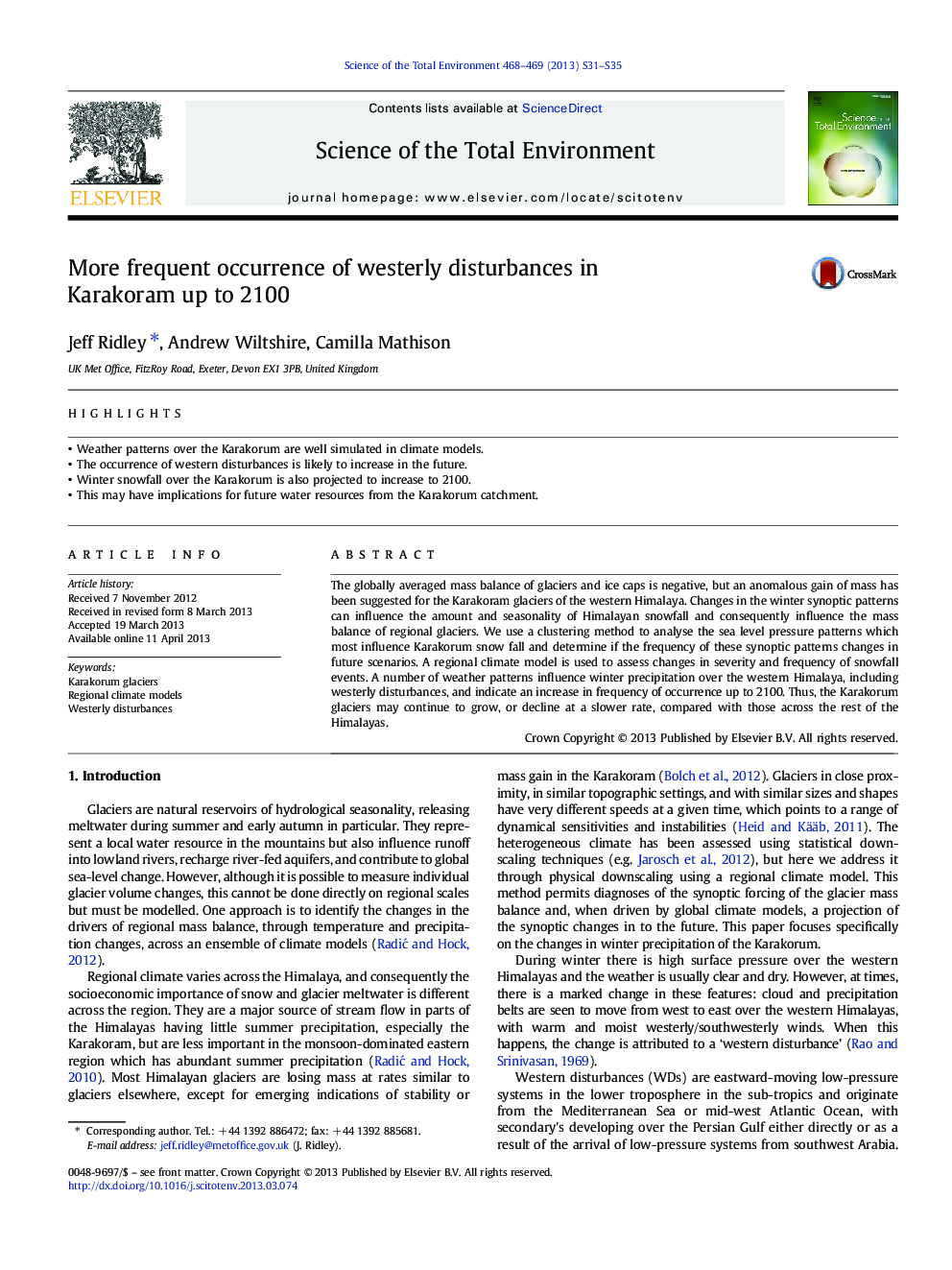| Article ID | Journal | Published Year | Pages | File Type |
|---|---|---|---|---|
| 4428715 | Science of The Total Environment | 2013 | 5 Pages |
•Weather patterns over the Karakorum are well simulated in climate models.•The occurrence of western disturbances is likely to increase in the future.•Winter snowfall over the Karakorum is also projected to increase to 2100.•This may have implications for future water resources from the Karakorum catchment.
The globally averaged mass balance of glaciers and ice caps is negative, but an anomalous gain of mass has been suggested for the Karakoram glaciers of the western Himalaya. Changes in the winter synoptic patterns can influence the amount and seasonality of Himalayan snowfall and consequently influence the mass balance of regional glaciers. We use a clustering method to analyse the sea level pressure patterns which most influence Karakorum snow fall and determine if the frequency of these synoptic patterns changes in future scenarios. A regional climate model is used to assess changes in severity and frequency of snowfall events. A number of weather patterns influence winter precipitation over the western Himalaya, including westerly disturbances, and indicate an increase in frequency of occurrence up to 2100. Thus, the Karakorum glaciers may continue to grow, or decline at a slower rate, compared with those across the rest of the Himalayas.
